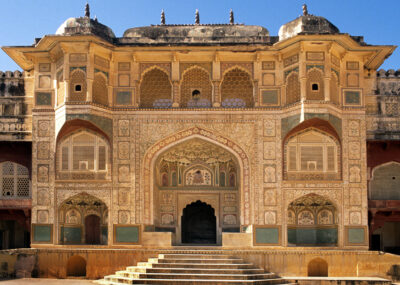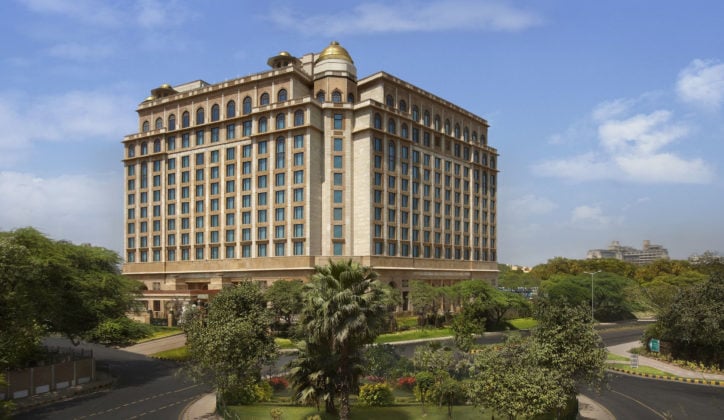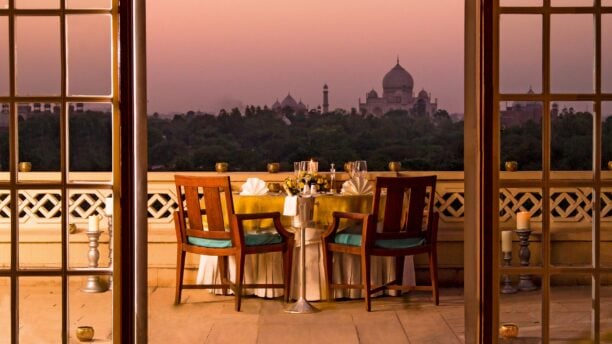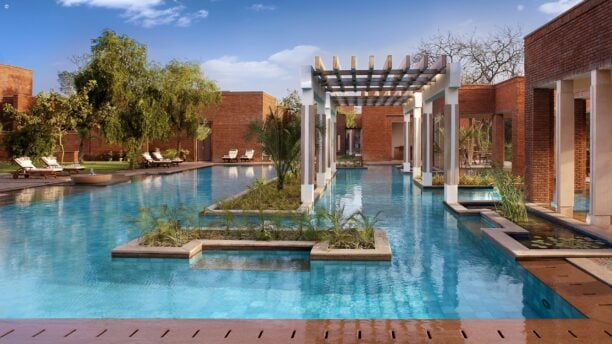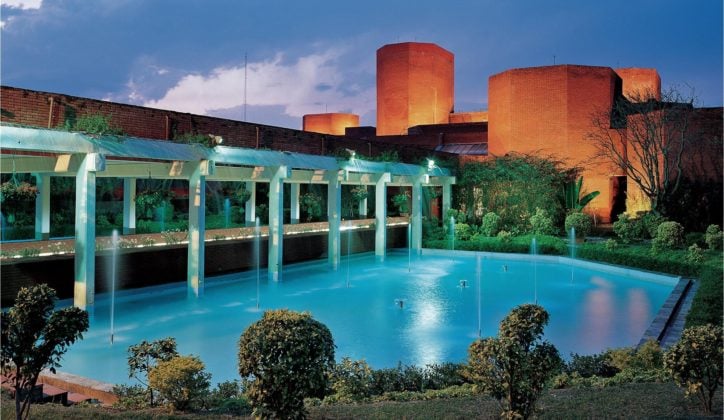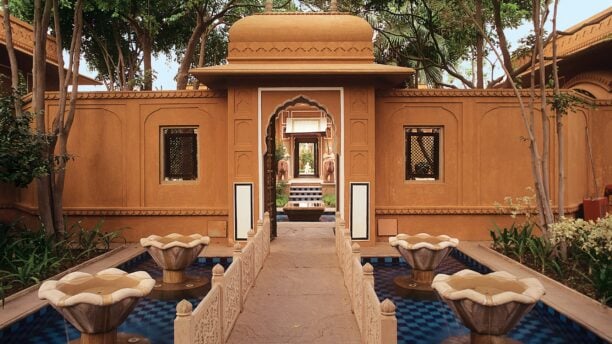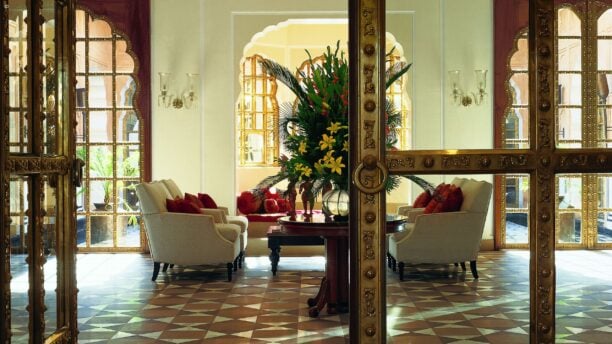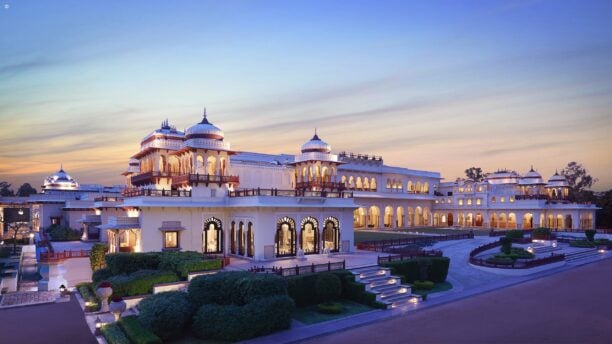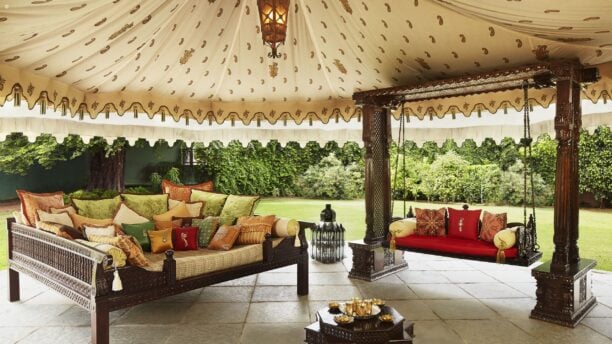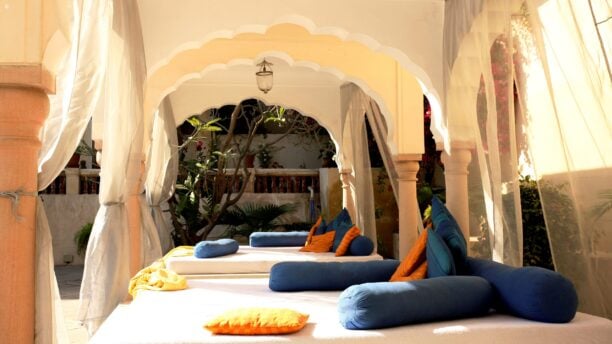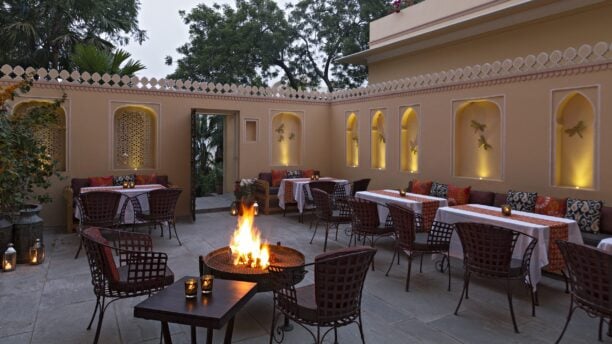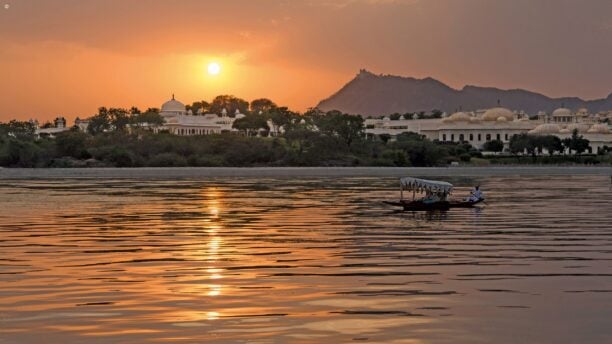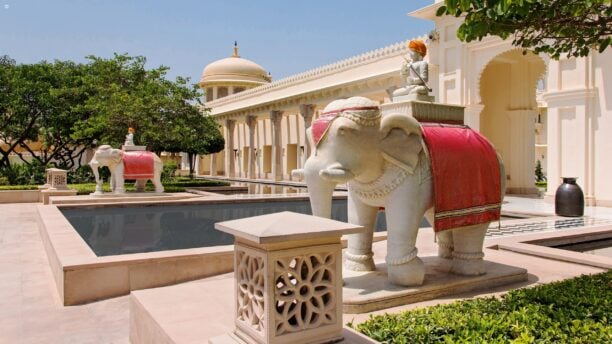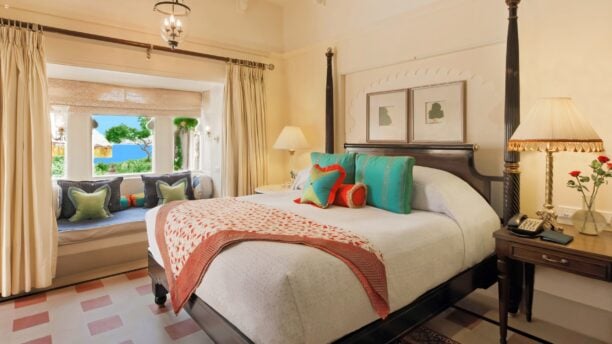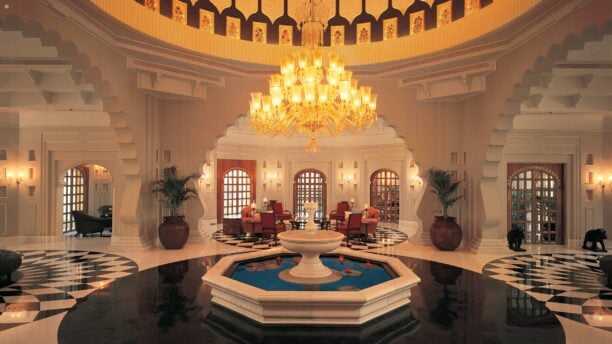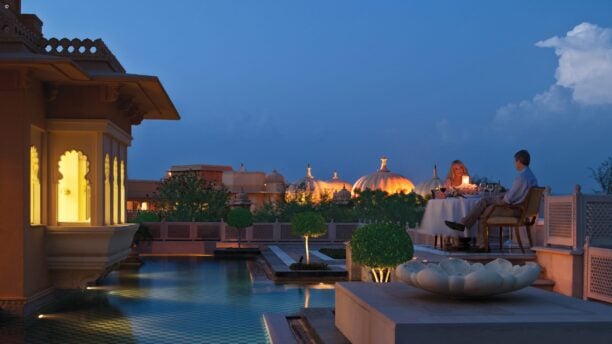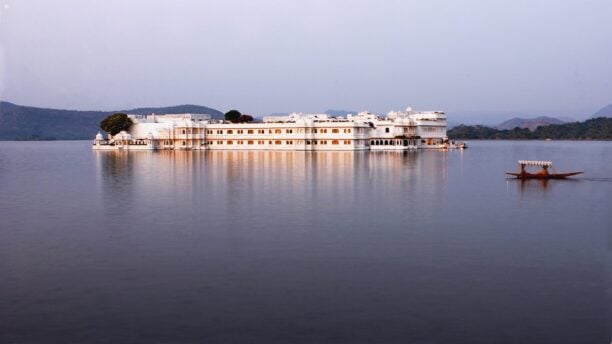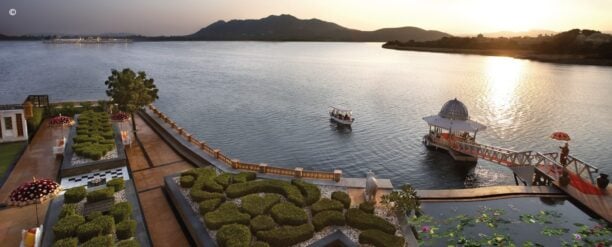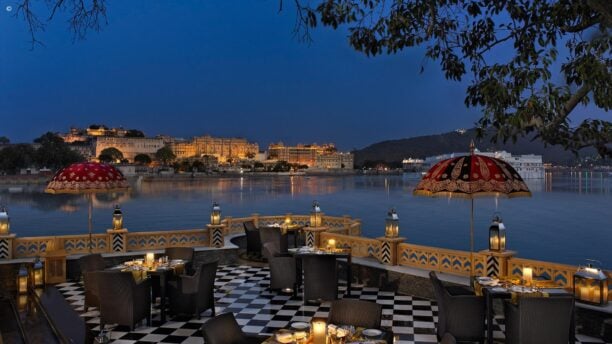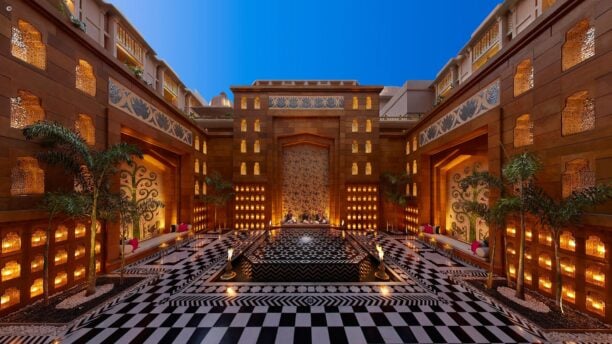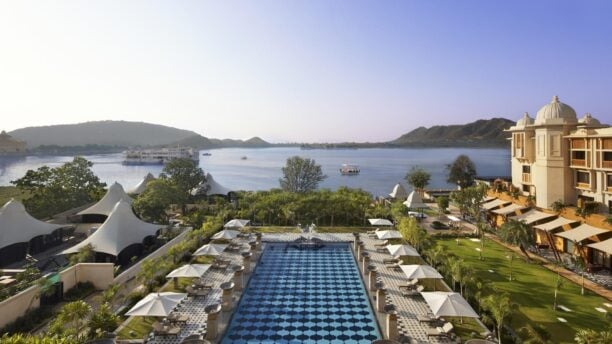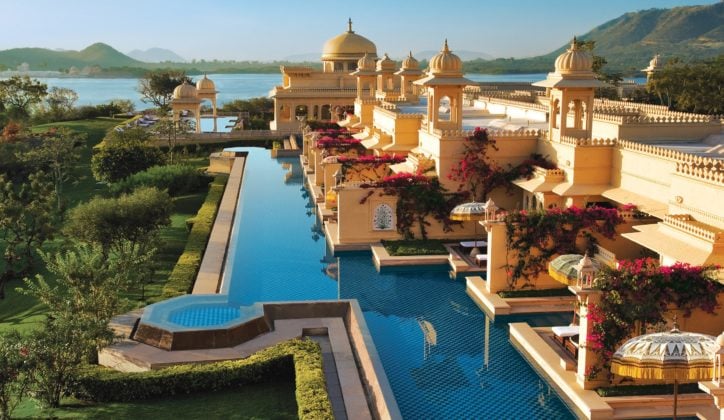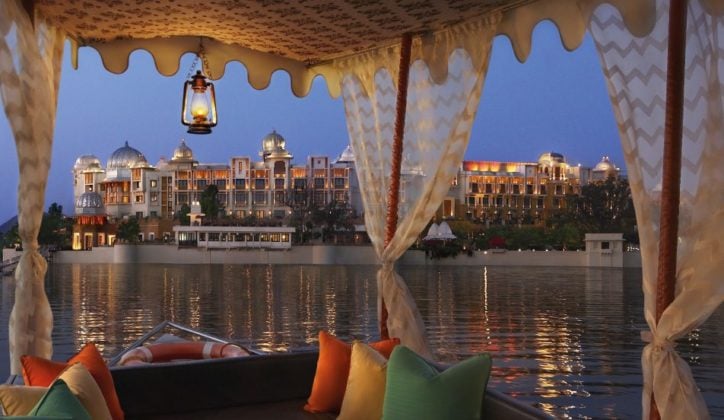Classic India
Trip highlights
- Explore Delhi's jumbled old town as well as New Delhi
- Witness ancient ceremonies on the ghats of the Ganges
- See the iconic Taj Mahal at sunrise and sunset
- Discover Jaipur's Amber Fort and visit the bazaar
- Make a stop at the deserted Mughal city of Fatehpur Sikri
- Browse a food and spice market in Udaipur
Bespoke trips with Jacada
We design one-of-a-kind journeys incorporating luxury in all its forms. Our bespoke trips include:
- Luxury accommodation throughout
- Privately guided tours
- Private transfers
- Meticulously selected experiences
- Expertise and support from your Jacada Concierge

- Days 1–3 Delhi
- Days 3–5 Varanasi
- Days 5–6 Agra & the Taj Mahal
- Days 6–9 Jaipur
- Days 9–11 Udaipur
- Days 1–3 Delhi
- Days 3–5 Varanasi
- Days 5–6 Agra & the Taj Mahal
- Days 6–9 Jaipur
- Days 9–11 Udaipur
Itinerary in detail
Every Jacada trip is tailored to your personal preferences and interests. Below you’ll find a sample itinerary to inspire your own custom-designed journey.
Getting to know Delhi
With a population of more than 18 million, Delhi is an international metropolis. Perhaps daunting at first sight, a little exploring soon reveals a diverse and fascinating culture. Throughout most of its history, it has served as the capital of various kingdoms and empires, captured and rebuilt time and again. If weaving your way in and out of the rickshaws and cyclists ever starts to get too much, turn the corner and you’ll find a tranquil garden or a quiet enclave in which to stop and recharge.

Where you could stay
Delhi
Overview
A driveway lined with tall palm trees leads to the grand white facade of The Imperial, one of Delhi’s most iconic hotels. Harking back to the days of the Raj, The Imperial is filled with old-world charm, its fascinating history a permanent presence.
The opulence of colonial India is felt from the moment you enter; the high ceilings, crystal chandeliers and artwork from the 18th and 19th centuries giving a sense of grandeur. Rooms are beautifully styled with antique furniture, marble floors covered in Indian rugs, and photographs of iconic Indian landmarks and events on the walls.
When the hotel opened its doors in the 30s, it became a meeting point for figures including Nehru, Ghandi, Jinnah and Lord Mountbatton who came to discuss the partition of India and the creation of Pakistan. Photographs of the various battalions during the British Raj adorn the walls and the 1911 Restaurant is a celebration of the year Delhi became the new capital of India.
You’re spoilt for choice when it comes to eating and drinking, with four restaurants offering south east Asian, gourmet Indian and European cuisine. There is also a pastry shop and a tea lounge with a glass domed ceiling and tinkling fountain and the hotel’s two bars are some of the city’s most popular.
An outdoor swimming pool is set within the verdant gardens of the hotel and there is a spa offering Ayurvedic therapies for when you want to simply drift away. Once you’ve recharged your batteries, head out and explore Delhi – you’re ideally located on Janpath, just moments from the renowned shopping district of Connaught Place and a short rickshaw ride from India Gate.
→ Find out moreDelhi
Overview
A modern and opulent hotel in the heart of Delhi’s diplomatic enclave, The Leela Palace New Delhi is sumptuous option that fuses traditional and modern Indian styles with European touches for an eclectic spectacle.
There are 254 rooms and suites, all large and handsomely furnished with Regency-style furniture and Indian miniatures adorning the walls. Bathrooms too are spacious with stand-alone baths and walk in showers.
The rest of the hotel is decorated with a curated collection of modern art, bouquets of fresh flowers – 14,000 blooms are delivered daily. Service is attentive, all rooms have access to a butler service and the lobby concierge desk can organise hotel cars (Rolls Royce Phantom and BMW 7 series), taxis and guides including personal shoppers.
Up on the roof is a spectacular temperature-controlled pool and there is also a spacious ESPA spa. Dining is varied, from sushi at Megu to Italian fine dining at Le Cirque, north Indian specialities at Jamavar, global cuisine at Qube and cocktails with finger food in the Library Bar’s sunked walled garden.
→ Find out moreMake it mine
Back in time
Grand design
Impressive architecture
Delhi's fashion scene
Impressive architecture
Delhi's fashion scene

Old Delhi tour
In complete contrast to the new city, the old city is a labyrinthine maze of lanes overhung by a tangled mass of electric wires. Within this chaos lies a semblance of order – each lane in this area is dedicated to a particular item, rather like a department store. There are lanes selling bangles, grocers, items used in weddings, silverware, clothes, spices and shoes. Sharing the same space are vendors with carts selling a variety of items, street side dentists, natural healers and cobblers. The old city has space for all professions. You’ll explore in cycle rickshaws and walk along some of the more interesting alleys.

New Delhi tour
Explore New Delhi, an area within Delhi built as the seat of the British Indian government in the early twentieth century. Much of the design was by architect Edwins Lutyens, and thus it is referred to as Lutyens’ Delhi, who invented his own order of classical architecture. There are grand buildings, such as Rashtrapati Bhavan (formerly known as Viceroy’s House), as well as the Lutyens Bungalow Zone, a green area of residential buildings that has the most expensive real estate in India and possibly the world. You’ll also see Humayun’s Tomb, built in 1570 as the first garden-tomb on the Indian subcontinent.

Qutb Minar and Humanyun's Tomb
The immense Qutb Minar at 72.5m (238 feet) in height is the tallest brick minaret in the world. The intricate tower was built in 1199AD to commemorate victory over the Rajput king, marking beginning of Muslim rule in India. Qutb Minar and the complex around it form the Qutb Complex, a UNESCO World Heritage Site. Other structures in the complex include the Alai Gate, the Alai Minar, the Iron Pillar and the ruins of several earlier Jain temples.
Humayun’s Tomb, commissioned in 1569 by the Mugal Emperor’s son Akbar as the first garden-tomb on the Indian subcontinent, started a fashion that would culminate in the Taj Mahal.

Fashion scene of Delhi
Dive into the fashion scene of Delhi by visiting the stores of established designers such as Sabyasachi Mukherjee and Anita Dongre before heading to Shahpur Jat and Hauz Khas Village to discover emerging talents like Nikhil Thampi and Doodlage. This journey offers a well-rounded glimpse into the dynamic local fashion scene, with the chance to meet a few of the designers.
Exploring India's spiritual capital
An ancient settlement on the banks of the Ganges, Varanasi is India’s spiritual capital and important among numerous faiths. Its 84 ghats – stone embankments that step down into the river – are its most famous sight. Most are crowded with pilgrims performing ritual ablutions in the river waters while a few are used solely for cremation. Sublime and sometimes shocking to visitors, the whole experience is utterly unforgettable.

Where you could stay
Varanasi
Overview
Set among beautiful gardens, mango orchards and marigold and jasmine fields is Nadesar Palace, a 19th-century colonial palace and once a guest house for the officials of the East India Company. With just ten rooms, the hotel is grand yet intimate and is a real oasis of calm.
The hotel is dedicated to and named after the Goddess Nadesari, and there is a shrine to the deity in front of the building. Inside, the walls are adorned with works of art from the Maharaja’s personal collection while the rooms are filled with antique furniture and decorated in the same hues as the flowers that are offered to the holy Ganges.
A lap pool is set within perfectly manicured gardens and for those looking for ultimate relaxation, the spa offers a range of treatments inspired by India’s ancient healing techniques. Once you’ve built your energy reserves back up, take to the mini four-hole golf course.
One of the joys of travelling to India is sampling the food. The restaurant, which harks back to the bygone era of the Raj, serves traditional Indian cuisine alongside more international dishes. Private dining experiences are available to make your stay extra special, including a poolside Indian barbecue that is cooked in front of you while you enjoy the mesmerising music of sitar and tabla players.
→ Find out moreVaranasi
Overview
Set on the banks of the holy River Ganges on one of Varanasi’s 87 ghats is Brijrama Palace, an opulent hotel that is perfect for those that want to be close to the heart and soul of this deeply spiritual city.
Built in the 18th century by the Royal House of Nagpur, the palace has been lovingly restored. Murals, hand-painted ceilings and beautiful carvings revealed during the restoration have brought it back to life, ensuring the building is in keeping with this most atmospheric of cities.
The hotel is approached by boat, immediately giving you the sense you are entering somewhere special. The central courtyard is filled with plants and sculptures and surrounded by a series of ornate pillars and arches cut from sandstone. Barnasi silk and gold leaf is used throughout the hotel and rooms are furnished with wooden four poster beds and beautiful Indian fabrics.
You’re ideally situated to explore the city, a stone’s throw from Dasashwamedh Ghat where the evening Ganga Aarti ceremony takes place. As people flock with their offerings, the river becomes a blanket of twinkling lights with oil lamps and flowers carried along the water.
The restaurant serves delicious vegetarian cuisine while tea, freshly ground coffee and traditional thandai can be enjoyed outdoors. In the evening there is live classical music in the lounge.
There are few places on earth quite like Varanasi, so make sure you set aside some time to head to the rooftop and soak up its incredible and unique atmosphere.
→ Find out moreSee more
Ceremony of light
On water and foot
Sacred site
Sacred site

Evening aarti prayer ceremony
In the evening, you will be taken for a boat ride on the River Ganges and experience the evening aarti prayer, one of the most important and popular ceremonies of the Hindu faith. Sometimes called the ‘ceremony of light’, it involves waving lighted wicks before the sacred images to infuse the flames with the deities’ love, energy and blessings. You will also float your own lamps down the river.

Ganges boat ride and old city walking tour
On this morning excursion, you will be taken for a boat ride on the River Ganges. After the boat ride you will meet a local expert on the ghats who will lead you on a private walking tour in the old city. On this walk you will see the back alleys, old havelis, temples, labyrinth of streets, street vendors and pilgrims that line the banks of the Ganges.

Tour of Sarnath
Head out of Varanasi to visit the sacred site of Sarnath. It is here that Buddha is believed to have set in motion what Buddhists call the Wheel of Dharma by delivering his first sermon to the five companions with whom he had sought enlightenment. Together with him, they formed the first sangha, or company of Buddhist monks. You’ll explore the ancient stupas and make a visit to the small but excellent museum at the site.
One night in Agra
It has graced the pages of books for centuries but nothing quite prepares you for seeing the Taj Mahal for the very fist time. The ultimate symbol of eternal love, this is one of India’s most memorable and emotive sights. The Taj Mahal sits on the banks of the holy Yamuna River within 42 acres of beautiful gardens. The domed mausoleum sits 52m above the river bank, surrounded by minarets on all four sides. It is flanked by a mosque and a guest house, both made from red sandstone and mirror images of each other. It’s well worth lingering to explore the city’s magnificent fort that lies just 3km to the west.
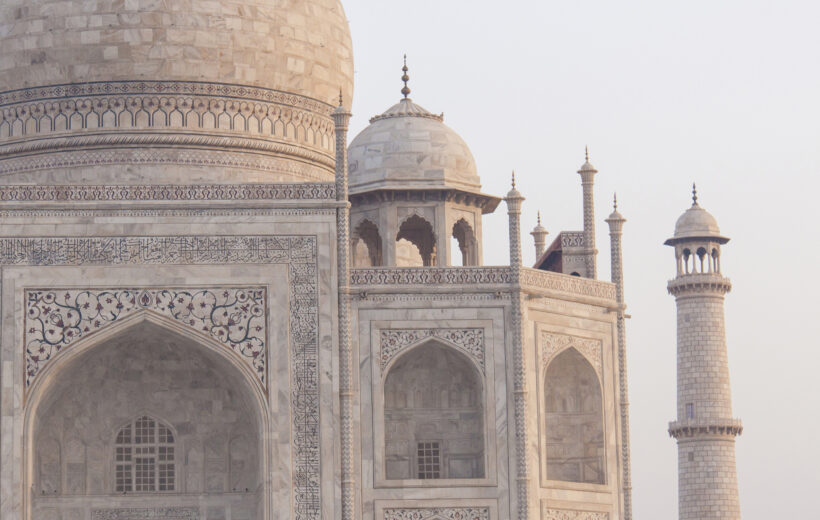
Where you could stay
Agra and the Taj Mahal
Highlights
- 102 rooms and suites
- Two restaurants
- Lounge
- Bar
- Fitness centre
- Spa
- Outdoor swimming pool
- Private dining options
- Kids' cooking classes
- Buggies to the Taj Mahal
Overview
Enjoy watching the colours of the marble change throughout the day, from its rosy glow in the morning light to the golden tint as the sun begins to set.
The hotel is approached via a driveway, lined with trees and lit with flaming torches at night. As you enter, step inside a Mughal-style quadrant with an arched passageway decorated with gold leaf frescoes, and cascading fountains.
Hallways leading to the rooms and suites are lined with wooden blinds with hand-printed golf motifs, the walls adorned with Mughal coins and antique Indian fabrics. The rooms themselves are full of old-world charm with hand woven rugs and intricately decorated wooden furniture. Each one offers uninterrupted views of the Taj Mahal with some of the suites featuring bathtubs that look out over the monument.
The Esphahan restaurant specialises in Indian food with traditional curries and fluffy breads served on burnished metal plates. Enjoy a cup of tea or coffee under the gold domed ceiling of the lounge or enjoy a drink and a game of backgammon in the bar.
The spa is centred around a domed marble steam room and offers a range of treatments inspired by ancient Indian rituals. There is also a fully-equipped gym that looks out over the hotel’s pristine gardens and an outdoor pool, which is partly covered so you can take refuge in the shade.
→ Find out moreAgra and the Taj Mahal
Overview
Just 3km (1.9 miles) from the centre of Agra and closer still to the iconic Taj Mahal, the ITC Mughal is an award-winning modern take on Mughal architecture set across 35 acres of lush gardens. 233 modern rooms and expansive suites overlook the landscaped lawns and sparkling lake waters.
Guests at the ITC Mughal are spoilt for choice when it comes to cuisine with fine dining at Taj Bano, authentic northwest Indian food at Peshawri and the more informal setting of the Mughal Pavilion.
A real highlight of the ITC Mughal is its Kaya Kalp spa, a vast complex dedicated to revitalising the mind, body and soul with luxuriously appointed spa suites, royal baths and a Mughal hammam.
As well as exploring the Taj Mahal, Agra Fort and other remnants from the Mughal Empire, there’s plenty to keep guests busy at the hotel with tennis, badminton, a nature trail and recreational lounge.
→ Find out moreMake it mine
Sunrise and sunset
Architectural artistry
Deserted city
Deserted city
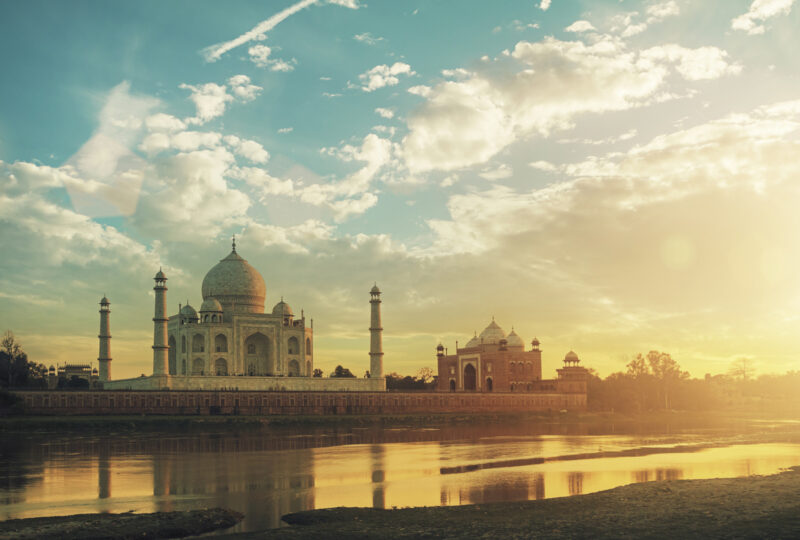
Visit the Taj Mahal
Visiting the Taj Mahal at sunrise or sunset is a truly magical experience, as the light plays on the marble of the tomb and its reflection shimmers in the water.
Heartbroken after the death of his favourite wife, Mumtaz Mahal, during the birth of their 14th child, Shah Jahan set about building the world’s most beautiful monument in her honour.

Tour Agra Fort
Just a few kilometres from the Taj Mahal sits the impressive Agra Fort, where the Mughal Emperor Shah Jehan was imprisoned by his son. Here you will see the art and crafting of the white marble that has made the area so famous, the Pearl Mosque and the Halls of Public and Private Audience.
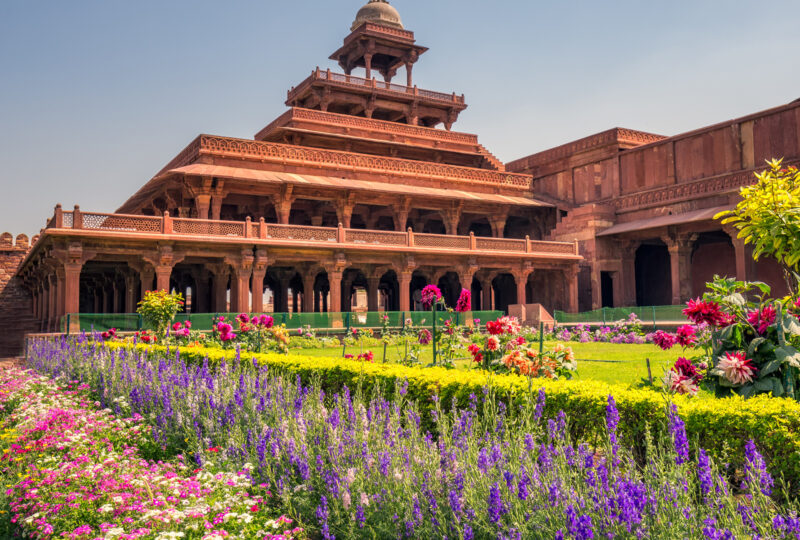
Stop at Fatehpur Sikri
En route to Jaipur, you may like to visit the deserted Mughal city of Fatehpur Sikri which was built by Emperor Akbar in 1569 and abandoned after just 15 years due to scarcity of water. See the graceful buildings including the Jama Masjid, the Tomb of Salim Chishti, the Panch Mahal and other palaces.
Take some time in Jaipur
The capital of Rajasthan and its largest city, Jaipur is at once the state’s commercial hub and one of its most fascinating cultural destinations. The pace of life here is fast, but take your time and in this somewhat frantic city you’ll find some of India’s most majestic palaces and atmospheric relics.
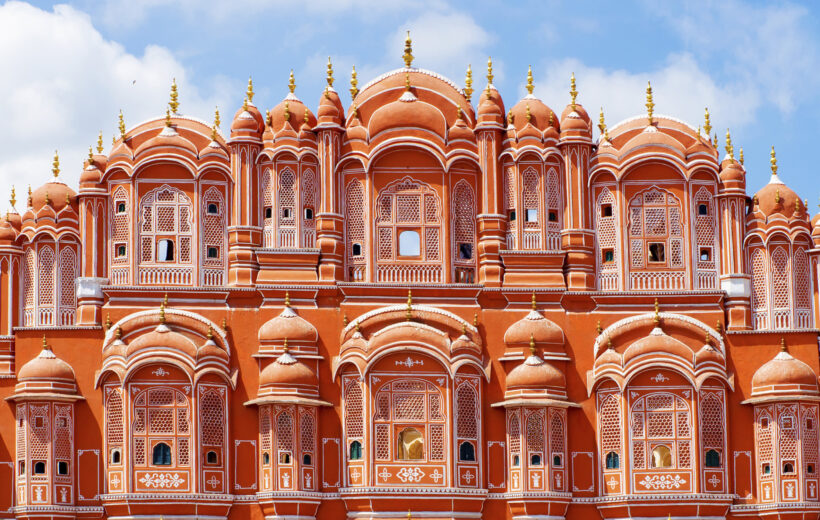
Where you could stay
Jaipur
Overview
Located well away from bustling Jaipur, The Oberoi Rajvilas is a sprawling fort-like retreat with some 32 acres of incredible gardens full of verdant trees, fragrant flowers and strutting peacocks.
Revived local techniques were used to recreate vernacular pink lime walls, grand Mughal arches, gold leaf frescoes, high domed ceilings and magnificent crystal chandeliers, giving the whole place an unmistakably palatial feel.
There are 71 rooms, luxury tents and private villas spread around the resort, many laid out in small clusters ideal for families or small groups wishing to stay near one another.
A serene 18th-century Shiva temple hosts Hindu blessings, meditation and morning yoga classes and a mansion of similar vintage is now the indulgent Oberoi Spa. The resort also boasts a fully-equipped fitness suite, putting green, two floodlit tennis courts, a croquet lawn and an outdoor pool.
Both restaurants have indoor and outdoor dining areas. The Surya Mahal is open throughout the year and has an extensive menu of world cuisine. Raj Mahal is open during the cooler months of October to April and serves rarely found Indian delicacies. Private dining can also be arranged.
→ Find out moreJaipur
Overview
A royal residence dating back to 1835, the splendid Rambagh Palace, within its 47 acres of grounds at the heart of the city, is one of Rajasthan’s finest heritage hotels.
Grand and intricate examples of Jaipur’s craftsmanship abound with hand-carved stone and marble latticework, fine antiques and elaborate Mughal gardens, all adding up to a thoroughly regal feel.
This carries on into the 45 spacious rooms, with their period décor and modern amenities, and is amplified by an order of magnitude in the 23 grand suites.
Enjoy an aptly royal India feast in the French-style ballroom of Suvarna Mahal, or opt for something a little more informal at the Rajput Room or with tea on the lawn. Drink among hard-won trophies at the sophisticated Polo Bar, or beside a restored locomotive at Steam.
After a day exploring Jaipur, head back to the Jiva Grande Spa for traditional and signature treatments, lounge by the pool, try your hand at croquet or perhaps learn about the Rambagh Palace’s own fascinating history with a guided tour of the grounds.
→ Find out moreJaipur
Highlights
- 13 rooms and suites including two spectacular Royal Apartments
- Art Deco-style swimming pool
- The Polo Lounge bar
- Two decadent in-house restaurants
- A spacious and relaxing spa retreat
- Situated in the heart of the Pink City
Overview
Built in 1729 as a private rural retreat for the Maharaja of Jaipur’s wife, the RAAS Rajmahal Palace has remained an opulent oasis even as the city has grown around it.
Still owned by the royal family of Jaipur, in the halcyon days of the British Raj it embodied the glamour of ‘Jaipur Life’. As the preferred private residence of Maharaja Sawai Man Singh II, the dashing polo player, the likes of Queen Elizabeth II, The Duke of Edinburgh, Jackie Kennedy and the Shah of Iran were entertained within its great walled gardens.
Today, it has been meticulously and daringly restored by designer Adil Ahmad, with grand chandeliered rooms embellished with intricate thematic wallpapers and luxurious fabrics.
With an initial 14 royal apartments, suites and palace rooms, ranging from palatial to genuinely royal – one room built specifically for Queen Elizabeth II’s state visit in 1961 – service is both personal and accomplished.
Down the marble staircase, choose to lounge around the art deco pool or treat yourself at the spa. There are three dining options; the relaxed Colonnade, vibrant 51 Shades of Pink, and formal traditional dining at The Orient Occident. The Polo Bar celebrates the talents of Jaipur’s sporting tradition and afternoon tea on the lawn is a must.
If you can bring yourself to venture outside the Rajmahal’s walls, you’ll find Jaipur’s famed forts, palaces and local markets just minutes away, and tailor made culinary, historical and photographic walking tours can be arranged.
→ Find out moreJaipur
Overview
Once the city house for the rulers of Samode, one of Rajasthan’s wealthiest towns, Samode Haveli has been converted into a luxury hotel that still has all the lavish touches of a royal residence.
Rooms and suites are scattered around a series of courtyards and gardens, each individually designed and reflecting the rich history and culture of the region. Tiled floors, antique furniture and furnishings upholstered in beautiful Indian fabric give them plenty of character. Some of the suites come with elegant arches, alcoves and pillars and the elaborate Sheesh Mahal suite is covered in floor-to-ceiling mosaics.
The wonderfully elaborate dining room is covered in hand-painted murals and lit by huge crystal chandeliers. Guests can also indulge in a decadent afternoon tea in the verandah lounge or enjoy a cocktail under the shade of the poolside cabanas.
Choose to relax in the Jacuzzi, steam room and spa or simply relax take a seat in the verdant gardens. You’re also ideally situated to explore the vibrant city of Jaipur with its myriad of architectural wonders and bustling markets.
→ Find out moreJaipur's City Palace

While in Jaipur, visit the sprawling City Palace, which is painted pink in keeping with the color theme of the old city. The impressive facade and interiors are a blend of predominately Rajput and Mughal styles of architecture. Within the palace complex are several museums including a textile gallery exhibiting a fine selection of textiles and costumes from the royal collection. You’ll also enjoy a tour also of the ceremonial rooms and private quarters which are usually off-limits to the public.
See more
Look to the stars
Market maze
Recall the past
Recall the past

Visit the Jantar Mantar
Maharaja Jai Singh II, the founder of the pink city, was an avid astrologer and built five observatories around northern India. The Jantar Mantar is the largest of the five and houses what is believed to be the world’s largest sun dial. The observatory consists of 14 geometric devices for measuring time, tracking constellations and observing the orbits around the sun.
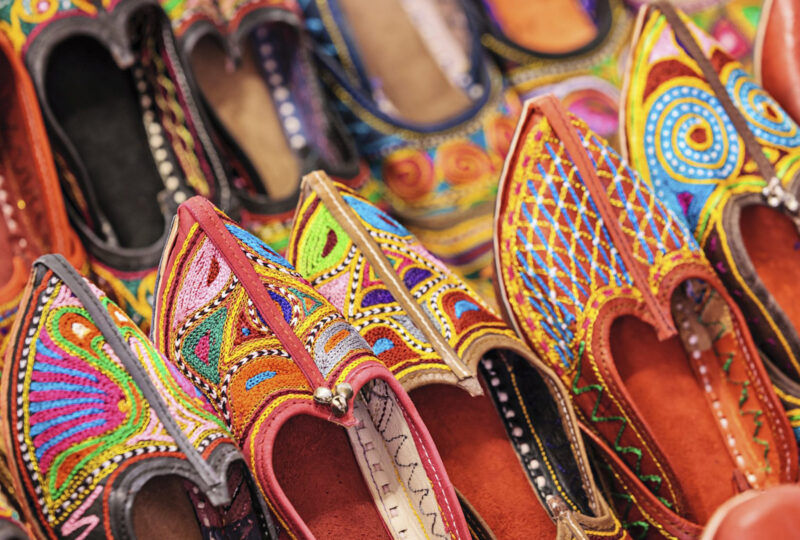
Wander the bazaars of Jaipur's old city
Explore the Badi Chaupad and Johari bazaars in Jaipur’s old city. Wandering through the maze of stalls and studios, you’ll see craftspeople working on all sorts of forms of local art including zardozi embroidery, gota work, kinary, silver ornament work and precious and semi-precious stonework.

Tour Amber Fort
Amber, the ancient capital of the region, still recalls its heydays in the majestic ramparts rising steeply along the contoured hillsides. It is an extremely well preserved building and during your guided tour you’ll visit the Jagmandir, or Hall of Victory, with its glittering mirrors, the Jai Mahal and Temple of Kali.
You can also visit the Anokhi Museum of Hand Printing, a gem of a museum tucked away among the cobbled streets of Amber. Here you can see the incredible work that goes into traditional block printing on cotton and silk.
Explore the arty streets of Udaipur
The scenic city of Udaipur sits surrounded on all sides by the wooded Aravalli Hills, its grand palaces reflected in serene lakes. The old city is a bustling jumble of alleys and side streets, but tranquility is never far away, be it boating on one of the lakes or a panoramic view from the hilltop Monsoon Temple. For shoppers, Udaipur’s ancient bazaars and vibrant arts scene make it a great place to find intricate Mughal-inspired miniature paintings, marble and silver craft.
A guided walk through the old city is a great place to start. With your guide, you’ll wind your way through lanes that teem with cows, elephants and people. You’ll pass shops, folk art hung on the walls of houses and pretty latticed haveli windows.

Where you could stay
Udaipur
Overview
On the banks of Lake Pichola across the waters from Udaipur, The Oberoi Udaivilas stands surrounded by lush gardens and the forests of what were once royal hunting grounds.
The hotel itself is a sprawling palace of ornate domes, breezy courtyards and sunlit corridors – an architectural reflection of Udaipur’s lakes and canals – with glimpses out to Pichola and verdant grounds.
There are 86 rooms and suites, many of which open out onto azure private and semi-private swimming pools with views across the lake to Udaipur’s City Palace, while others look into the estate’s gardens and wildlife sanctuary – home to deer and wild boar. The style is a blend of ornate Mewar with subtle modern amenities. In addition to private pools, the suites feature their own outdoor dining pavilions.
During your time here, explore Udaipur and beyond on private boat and walking tours, venture out into the Aravalli Hills to visit remote tribes and hidden temples, or relax with indulgent spa therapies and yoga sessions.
Suryamahal and Chandni are all-day indoor and outdoor dining venues for multicultural cuisine, with Udaimahal the place for fine Indian dining. Unique dining experiences, such as learning to cook with the chef, lunching while cruising on the lake and intimate private dinners can also be arranged. And naturally the bar is an elegant venue for classic cocktails.
→ Find out moreUdaipur
Highlights
- 66 rooms and 17 suites
- Three restaurants and a bar
- Jiva Spa Boat
- Large outdoor pool
- Classic car hire
- Heritage walks
- Boat rides on Lake Pichola
- Private dining experiences
- City tours
Overview
Built as a pleasure palace by a young prince in 1746, it has since been tactfully restored to its former glory, its fine white marble walls glowing orange at sunrise and purple at dusk
66 rooms and 17 suites are designed to capture a different mood and period from the palace’s long history, each with stunning views across the lake to the surrounding hills and Udaipur or into the lush courtyard gardens.
This spectacular setting is best enjoyed in its panoramic glory from the rooftop Bhairo restaurant. Neel Kamal is the place for authentic Indian specialities, or Jarokha if you’re after a more informal spot to eat throughout the day. Unforgettable private dining experiences – such as out on the lake aboard a 150-year-old boat – can also be arranged.
During the day, find secluded spots around the palace to relax, bathe in the swimming pool, treat yourself on the Jiva Spa Boat or spend some time at handsome Amrit Sagar bar. Across the lake’s waters, explore Udaipur on city tours, heritage walks and even hire a vintage car for the day.
→ Find out moreUdaipur
Overview
The Leela Palace Udaipur is a spectacular modern incarnation of a Mewari palace, reached by an ever-so-romantic boat cruise. But, as grand as the building is, it is the views over the waters of Lake Pichola to the City Palace and the Aravalli mountains beyond that steal the show.
All 72 rooms and 8 suites make the most of the lakeward vista. Each are embellished with traditional elements of Rajasthan design and a roster of contemporary luxuries.
Around the grounds you’ll find a huge lakeside swimming pool, ornate courtyards and a fabulous spa. Dining in the city has been taken up a notch by the fine Indian fare on offer at Sheesh Mahal and intricate international cuisine at The Dining Room. There’s also a well-stocked wine cellar and bar.
Activities on offer from The Leela Palace include heritage walks of nearby architectural gems, lake cruises, horse and camel rides, tours to rural villages outside Udaipur, antique shopping and more.
→ Find out moreUdaipur
Overview
Situated in the heart of the countryside, a little way north of Udaipur, RAAS Devigarh is a romantic hill-top palace that has been sensitively transformed into a luxurious boutique retreat.
The dramatic rural setting and ornate 250-year-old architecture have been allowed to take centre stage as interiors were renovated in a minimalist style, a unique blend of traditional Indian craftsmanship and subtle modern touches.
There are 39 suites, all large and light with mother-of-pearl headboards and marble-based beds. Some have balconies and window seats – perfect nooks to spend a little time with a book from the library – and others with particularly impressive bathrooms and private sun decks.
Start your days here with a rooftop yoga session as the sun rises over the Aravalli Hills before a day out exploring the surrounding countryside by horse, mountain bike or on foot. There are also excursions to nearby villages and ancient Jain temples as well as into Udaipur itself.
Return to the pampering spa, then enjoy a sunset from the bar, ending the day with wonderfully fresh Indian and international cuisine at the restaurant.
→ Find out moreMake it mine
Get cooking
Exquisite workmanship
Artistic pursuits
Artistic pursuits

Market tour and home cooking class
Visit the local market to learn about vegetables and spices. Then your host will take you on a culinary journey, teaching you about Indian spices and how to use them. This will be hands on session and at the end, you’ll enjoy your creations for lunch.

Tour Udaipur's City Palace
The City Palace, sat on the banks of Lake Pichola, is one of the architectural wonders of Rajasthan, its detailed art and workmanship a tribute to the skills of local craftspeople. The royal family claim to be ‘surya vansh’, descendants of the sun, and so the whole structure faces east and there is a stunning bejewelled image of the sun at the entrance.

Jal Sanjhvi water painting
Jal Sanjhvi is the art of drawing on water, a popular ritual performed at temples dedicated to Krishna where coloured powders are used to draw iconic images onto water. A full canvas takes about five hours to create, and you’ll arrive in time to see the picture completed.
In a word - amazing. ALL of the recommendations - from the hotels, to the tours and sights, and most especially to the fantastic guides, drivers and handlers who made it all so seamless and engaging on the ground in India- made this a truly memorable experience. And of course a special thank you to Rachel O'Leary and Gilda Tang…
Why book with Jacada

Personalised design
We’ll plan your trip around your personal interests, tastes and preferences, providing honest advice based on first-hand knowledge.

Authentic experiences
Our expert guides and brilliant Concierges are hand-picked for their ability to bring your destination to life with care and passion.

Positive Impact
We seek out unforgettable experiences that benefit both local communities and the environment.








